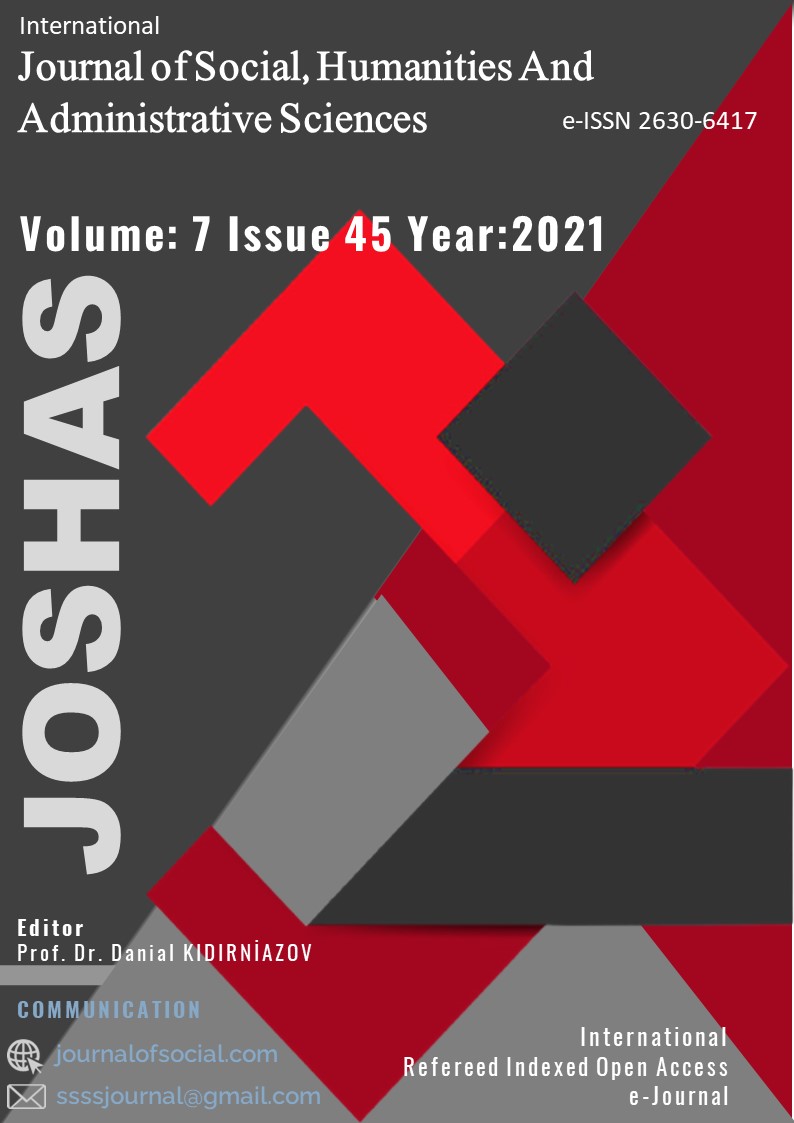Author :
Abstract
Bu yazı, Hüseyin Rahmi Gürpınar’ın bazı romanları ile onun iç dünyası arasındaki ilişkiyi betimlemektedir. Ardında 41 roman, 9 öykü, 4 oyun ve birçok kalem tartışmalarıyla düzyazılarının derlendiği 6 kitap bırakan sanatçı, edebî üretkenliğinin büyük bölümünü Heybeliada’nın yalnızlığında şekillendirmiştir. Bir yandan edebî eserleri, diğer yandan örgü, nakış ve kanaviçeleri ile bunları bir arada işleyen sanatçı, genel ahlaka aykırı görülen romanından dolayı sansüre uğramıştır. Bugün sanatçıdan geriye, düşlerden gerçeklere ve gerçeklerden düşlere iki yol uzanır. Birincisi, yıldızların parladığını göremeyen gözlerin bir gün kayan yıldızların gömüldüğü maziye nasıl dönüşeceğini anımsatan bir mekân; diğeriyse, sanatçının sansüre karşı sözleridir.
Keywords
Abstract
In this article, the relationship between of Hüseyin Rahmi Gürpınar's some novels and his inner world is described. The artist, who left behind 41 novels, 9 stories, 4 plays and 6 books in which his prose was compiled with many pen discussions, shaped most of his literary productivity in the solitude of Halki. The artist, who works with his literary works on the one hand, and knitting, embroidery and cross-stitch on the other, has been censored because of his novel, which is seen as contrary to general morality. Today, there are two paths from the artist, from dreams to reality and from reality to dreams. First, it is a place that reminds us how the eyes that cannot see the shining of the stars will one day turn into the past where the shooting stars are buried; the other is the artist's words against censorship.
Keywords
- Çelik, Zeynep, 19. Yüzyılda Osmanlı Başkenti-Değişen İstanbul, 2. Baskı, Tarih Vakfı Yurt Yayınları, İstanbul, 1986.
- Göçgün, Önder, Hüseyin Rahmi Gürpınar, Kültür Bakanlığı Yayınları, Ankara, 1993.Göçgün, Önder, “Hüseyin Rahmi Gürpınar”, TDV İslâm Ansiklopedisi, 14: 324-326.
- Güngör, Esra, “Cumhuriyet Döneminde Heybeliada (1923’ten Günümüze)”, Marmara Üniversitesi TürkiyatAraştırmaları Enstitüsü, Yüksek Lisans Tezi, İstanbul, 2013.Gürkan, S. Leyla, “Manastır”, TDV İslâm Ansiklopedisi, 27: 558-560, 2003.
- Gürpınar, Hüseyin Rahmi, Ben Deli miyim? Atlas Kitabevi, İstanbul, 1972.Gürpınar, Hüseyin Rahmi, Hakka Sığındık, Özgür Yayınları, İstanbul, 1995.
- Hızlan, Doğan, “Nihayet Hüseyin Rahmi’ye müze”, Bakış, Hürriyet Gazetesi, 1990.
- Kaplan, Mehmet, “Hüseyin Rahmi Gürpınar’ın romanlarında aslî tipler”, Türk Edebiyatı Üzerine Araştırmalar I, Dergâh Yayınları, İstanbul, 1997, 459-475.
- 40 Göçgün, Hüseyin Rahmi Gürpınar, s.17.Nesin, Aziz, Vatan Sağolsun, Nesin Yayınevi, İstanbul, 2005.
- Özbalcı, Mustafa, “Hüseyin Rahmi Gürpınar’ın bazı romanlarında ferdî ve sosyal tenkit”, On Dokuz Mayıs Üniversitesi Education, Scientific Disciplines, 6(1), 207-220, 1991.
- Sakaoğlu, Necdet, Bu Mülkün Sultanları, 5. Baskı, Oğlak Yayınları, İstanbul, 2001.
- Serdar, Ali, “Hüseyin Rahmi Gürpınar’ın romanlarında ahlâk sorunsalı”, Bilkent Üniversitesi Ekonomi ve Sosyal Bilimler Enstitüsü, Doktora Tezi, Ankara, 2007.
- Spinoza, Etika, çev. Çiğdem Dürüşken, Kabalcı Yayınları, İstanbul, 2011.





